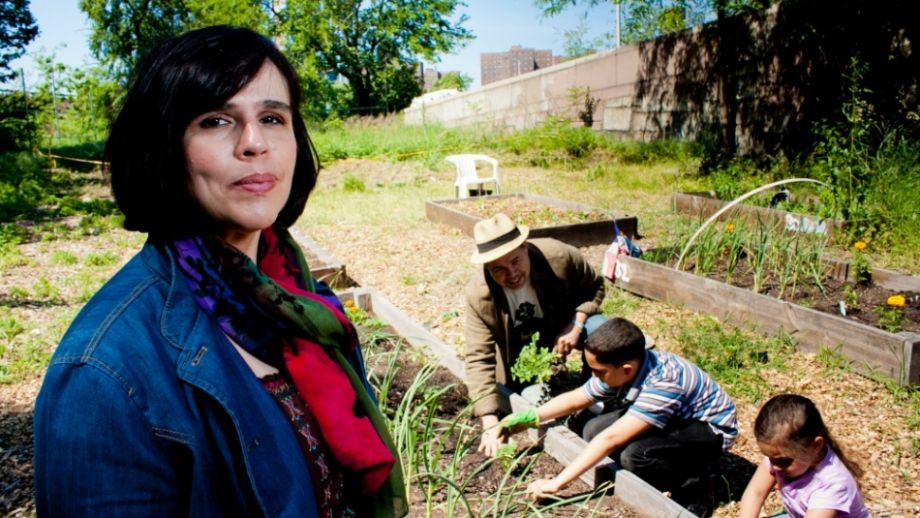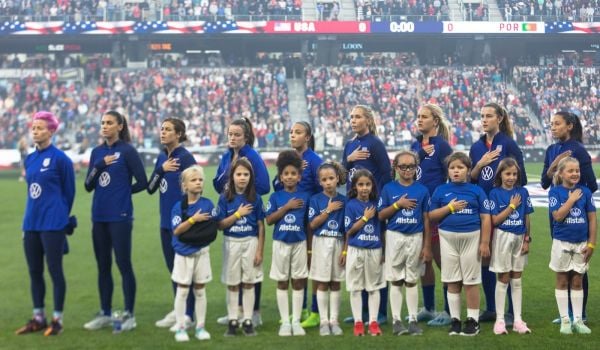In Forefront this week, Hamida Kinge turns to the South Bronx — or “ground zero” of the obesity epidemic — where only a dozen grocery stores serve 88,000 people, two out of every three adults are overweight, and efforts to reverse this morbid trend are finally gaining some traction.
Below, we provide an introductory excerpt from Kinge’s story.
One Friday evening in January, Loyce Godfrey was in the Soundview section of the Bronx, preparing to give a workshop on diabetes prevention at one of 47 churches that she works with through an initiative put together by Bronx Health REACH. The non-profit is a coalition of over 70 community organizations, health care providers, faith-based institutions and housing and social service agencies. Half an hour before the workshop, Godfrey got hungry and took to neighborhood streets in pursuit of something to eat. After a few blocks, she found a Chinese takeout. She went in and asked for brown rice. They didn’t have any. “I had to walk several blocks before I could even find a McDonald’s,” recalled Godfrey. She settled for a couple of “seared” mini snack-wraps, minus the sauce.
Godfrey’s experience is not unique. In many areas of the South Bronx, locals face a barrage of Chinese takeouts, fried chicken joints and other fast food options. When they want to go grocery shopping, 88,000 South Bronx residents can choose from only a dozen small or low-quality grocery stores and supermarkets. In some areas of the South Bronx, there are close to zero food options for several blocks. In the Mott Haven neighborhood, for instance, residents of several housing complexes have the relative fortune of a Western Beef supermarket on 140th Street and Morris Avenue. The store — which, with its high shelves and dusty floors, feels more like a warehouse than your typical suburban supermarket — stocks many discounted processed foods, a large percentage of which are high in fat and sugar content. Its small produce section, with its bruised tomatoes and pale heads of lettuce, isn’t all that tempting.
Western Beef is one of only two food options for several blocks. Aside from Western Beef, “there is only one bodega on that strip,” explained Nancy Ortiz-Surun, a founding farmer of La Finca Del Sur, a farm located on 138th Street and Grand Concourse. “There is almost zero access to food [there].”
In comparison, the Upper West Side, with 60,000 residents, has three times the number of grocery stores and supermarkets.
There is a connection between the presence of a supermarket within a census tract alone, or in combination with a smaller grocery store, and lower ratios of obesity and overweight residents, a 2006 study by the American Journal of Preventive Medicine found. Obesity, however, isn’t the end of the health risks associated with living in non-foodie New York. The city has a life expectancy higher than the national average, but that statistic does not apply to extremely poor areas, including the South Bronx, where the average life is years shorter. New Yorkers in East Harlem, Williamsburg-Bushwick and some parts of the South Bronx are hospitalized for diabetes at 10 times the rate of Upper East Side residents, according to a 2007 study by the Health Department. Putting science aside, the issue is a huge quality-of-life concern for parents trying to feed families on a limited budget and without a car to travel to the nearest suburban-style supermarket.
In 2008, the Bloomberg administration came up with a way to quantify that need. Known as the Supermarket Need Index, the formula determines which areas of the city have the highest diet-related disease rates and largest populations with limited access to fresh foods. Based on index rankings, the city developed policy recommendations, including a suggestion that future rezoning regulations must consider supermarket need.
A year later, a program to spur supermarket growth called Food Retail Expansion to Support Health, or F.R.E.S.H, was announced. The program, which is open to current grocery store operators as well as developers, offers zoning and financial incentives to help increase and retain supermarkets in underserved communities throughout New York City. Interested supermarkets work with the city’s Economic Development Corporation to develop business plans and obtain financial support. It’s a concept that has been tried in other cities including Louisville, Newark, Cleveland and New Orleans, which offered its first such incentive to a grocer in Central City last winter.
Three years after the launch of the program, three F.R.E.S.H. projects in the Bronx have been approved for financial incentives: A Food Bazaar, an Associated Supermarket and a Western Beef, which will replace the existing 140th Street store with a new supermarket. In total, the three supermarkets — two of which are already under construction — will receive tax exemptions worth approximately $6 million over the next 25 years. Western Beef, the first to receive the incentive, expects its new $11.5 million supermarket to create 120 permanent jobs. Patrick Delorio, CEO of the Queens-based chain, told the Economic Development Corporation that building the new location is “a reflection of our strong commitment to serve the communities in which we operate.” The new location will offer, among other things, a 3,000 square-foot produce department.
In the meantime, however, with only a dozen supermarkets available in the South Bronx, many residents rely on corner store bodegas for day-to-day grocery shopping. These stores, so ubiquitous in New York City, overwhelmingly stock high-cholesterol meat and dairy products, as well as walls of sugar-laden beverages and snacks.
To read more, subscribe to Forefront. Already a subscriber? Click here to continue reading.

Hamida Kinge has written about everything from food security to ocean acidification to luxury cell phones. She was a 2009 fellow of the Scripps Howard Institute on the Environment and a 2008/09 reporting fellow of the Metcalf Institute for Marine & Environmental Reporting. She has contributed to Next American City, Grist, Philadelphia City Paper and U.R.B. domestically as well as Europe-based magazines Essential Macau and Straight No Chaser. For the past year, she has been teaching English as a foreign language to international students and business professionals. Hamida has also been a volunteer English tutor for the International Center in New York.
















